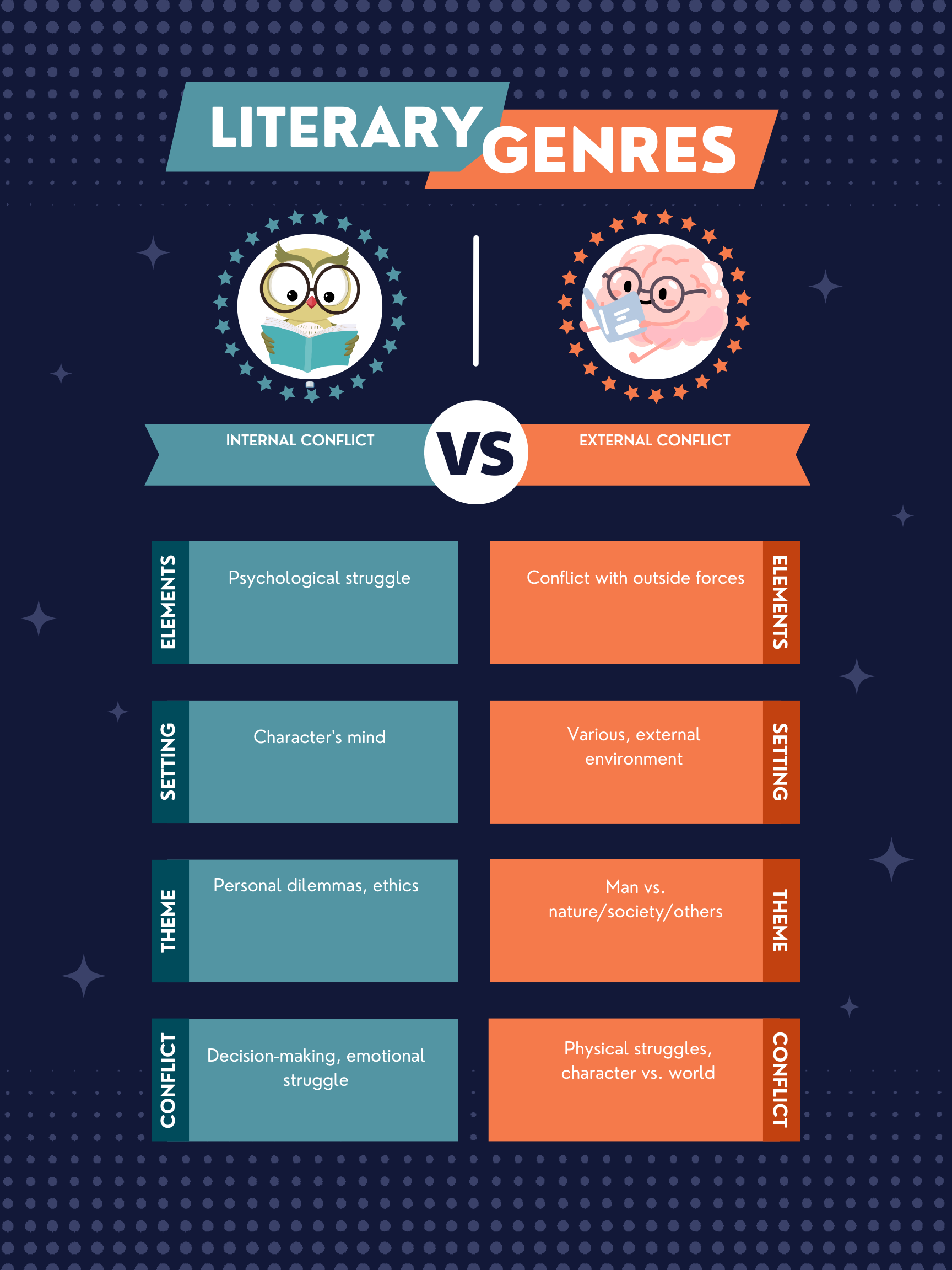Internal conflict occurs within a character (emotional struggle); External conflict is between a character and an outside force.
Internal Conflict 🤔
Internal conflict is the struggle that occurs within a character, dealing with emotions, desires, ethics, or dilemmas. It’s a mental or emotional battle, such as Hamlet’s indecision in Shakespeare’s “Hamlet.” He grapples with the moral implications of avenging his father’s death, illustrating the quintessential internal struggle between duty and ethical integrity.
External Conflict 🌍 vs. 🧍
External conflict happens between a character and an outside force, which could be another character, society, nature, or a supernatural element. A classic example is the epic battle of Harry Potter against Voldemort in J.K. Rowling’s “Harry Potter” series. The external conflict is not just the physical battles but the ideological clash between good and evil.
Summary
| Literary Device | Definition | Purpose | Usage | Relevant Examples |
|---|---|---|---|---|
| Internal Conflict | Struggle occurring within a character | To explore a character’s complexities and growth | Character-driven stories, novels, plays | Hamlet by William Shakespeare |
| External Conflict | Conflict between a character and an outside force | To drive the plot and show a character’s resilience | Plot-driven narratives, adventures, dramas | Harry Potter series by J.K. Rowling |
Writing Tips
- Internal Conflict: Dive deep into your character’s psyche. What fears, desires, or beliefs drive them? Use these internal struggles to develop a compelling character arc.
- External Conflict: Increase the stakes with formidable antagonists or challenging environments. How do these external forces push your character to grow or change?
FAQs
Q: Can a story have both internal and external conflicts?
A: Absolutely! Most compelling stories weave both types of conflict to create depth and tension.
Q: How do I balance internal and external conflicts in my writing?
A: Balance can be achieved by ensuring that internal conflicts are as engaging as external ones, allowing them to influence each other and drive the plot.
Q: Is one type of conflict more important than the other?
A: No, both are vital in different ways. Internal conflict enriches character development, while external conflict often drives the plot.
Exercise
Read the following paragraph and identify whether it’s primarily describing an internal or external conflict:
“Despite the blizzard raging outside, Mark’s greatest struggle was deciding whether to keep his family’s secret or reveal the truth to his friend, risking their trust and relationship.”
Answer: Internal conflict.
Other Device Comparisons You May Find Interesting
- Protagonist vs Antagonist: The driving forces of story conflict.
- Static vs Dynamic Characters: Characters’ transformations through conflicts.
- Foreshadowing vs Flashback: Techniques for enriching the narrative timeline.
- Point of View vs Perspective: How narrative voice affects storytelling.
Exploring these comparisons further can deepen your appreciation of literary devices and enhance your storytelling skills, whether you’re reading critically or crafting your own narratives.

